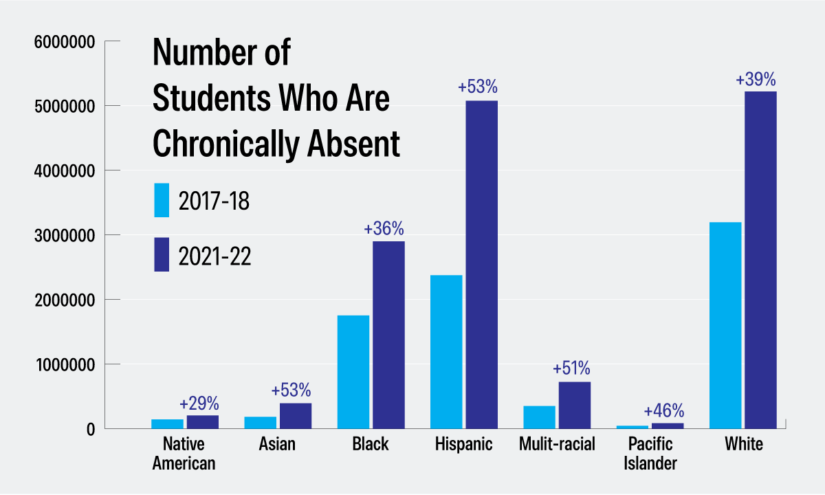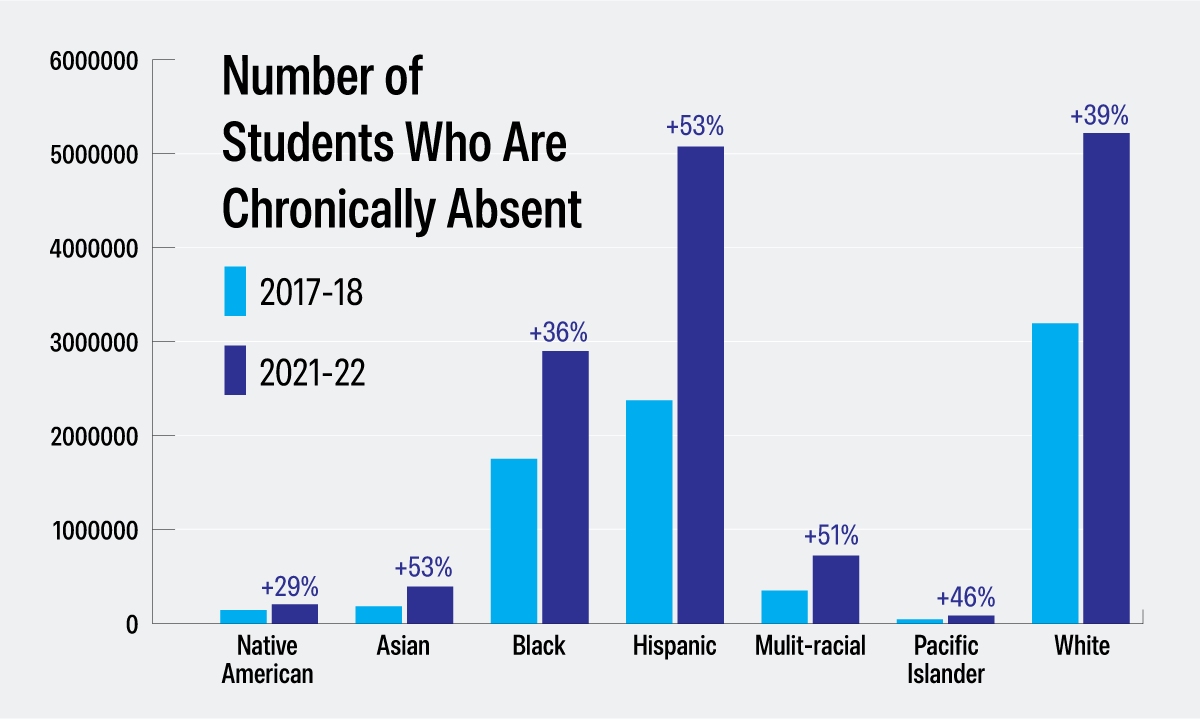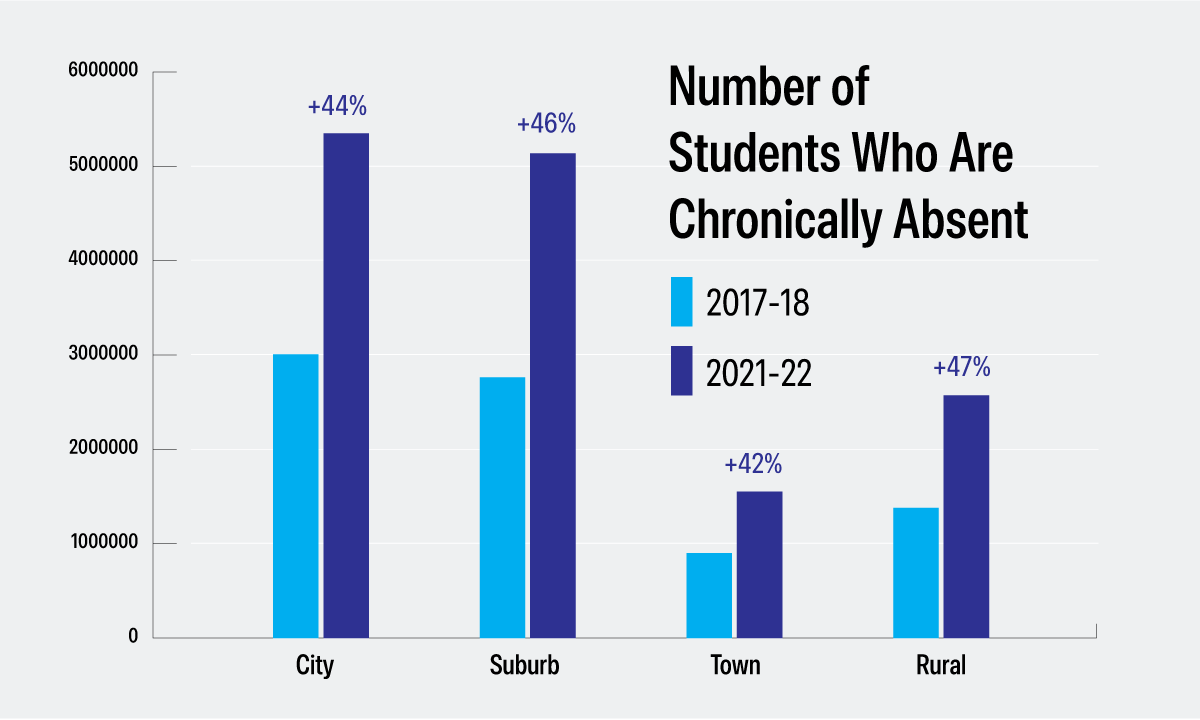Reflecting on the tenets that shape our educational practices is fundamental for …
Dramatic Surge in Absenteeism Among Suburban, Rural, and Latino Students, According to New Report
Emma Wordsmith

A new study on chronic absenteeism reveals that absences have risen among all students, with a noticeable increase among Latino students and in suburban and rural school districts.
The Attendance Works and Everyone Graduates Center at Johns Hopkins University analyzed federal data and found that during the 2021-22 academic year, there were over 14 million chronically absent students, an increase of nearly seven million compared to 2017-18.
According to Robert Balfanz, director of the Everyone Graduates Center, addressing widespread absenteeism in the post-pandemic era requires an “all hands on deck” approach.
This new analysis confirms previous findings that showed an alarming rate of high or extreme chronic absenteeism in schools across the country, affecting two out of three students.
Chronic absenteeism is defined as missing at least 10% of the school year, roughly 18 days.

While the attendance trend impacted students of all ethnic backgrounds, Latino students experienced the highest increase in chronic absenteeism, with a 53% jump from 2017-18 to 2021-22.
Other ethnic groups also saw significant increases, including Pacific Islander students (46%), white students (39%), Black students (36%), and Native American students (29%).
Balfanz attributes the challenges faced by low-income and immigrant families during the pandemic to the widening attendance gaps. Latino students, in particular, faced additional burdens resulting from their families’ job losses and cultural expectations of caregiving.

The impact of chronic absenteeism was also observed geographically, affecting students in suburban and rural areas the most.
In 2021-22, chronic absenteeism in suburban school districts increased by 46% and in rural districts by 47%, compared to the numbers from 2017-18.
Cities experienced a 44% increase, while towns saw a 42% jump in chronic absenteeism.
Hedy Chang, founder and executive director of Attendance Works, attributes the attendance gaps in rural areas to inequitable access to healthcare services and poor transportation during the pandemic.
The analysis also found that schools serving a higher number of students living in poverty saw the greatest increase in chronic absenteeism.
Among schools with 75% or more students receiving free or reduced-price lunch, chronic absence nearly tripled, from 25% to 69%.
Chang emphasizes that poverty is a major contributing factor to student chronic absenteeism nationwide.
Balfanz adds that solving the disconnect between students and their schools is crucial in addressing chronic absenteeism.



